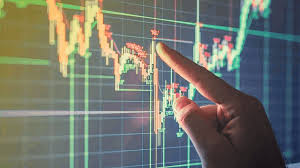Many beginner traders find technical indicators confusing when they first start using them.
One of the most common questions is: How do you use moving averages in crypto trading? Moving averages help traders identify trends and potential trade entry and exit points.
To start, set two moving averages based on the closing rates of the last 13 and 26 candles. When the 13-day SMA (Simple Moving Average) crosses above the 26-day SMA, it signals an upward trend and a good time to buy.
Conversely, when the 13-day SMA crosses below the 26-day SMA, it indicates a downtrend and a potential selling opportunity.
Understanding technical indicators like moving averages is crucial for building a solid trading strategy. While the cryptocurrency market is unpredictable, these tools help traders make informed decisions.
Setting Up Simple Moving Averages for Crypto Trading
Here’s a step-by-step guide to using moving averages for crypto trading. These steps will help you monitor price trends and identify potential buy or sell signals at crossover points.
1. Open the Chart and Find the Indicators Tab
- Open the chart for your preferred cryptocurrency.
- Locate the “Indicators” button at the top of the screen.
- This tab allows you to add various technical analysis tools.
2. Search for “Simple Moving Average” and Add It Twice
- Enter the Indicators tab and use the search bar.
- Type “SMA” and select it.
- Add two SMAs to your chart.
3. Configure the First Moving Average (13-Period SMA)
- Click on the SMA text at the top left of your chart.
- Press the settings (cog icon) button.
- In the inputs menu, set the length to 13.
- Use the closing price as the source.
- Change the color for easy identification (e.g., blue).
- Adjust the thickness of the line for visibility.
4. Configure the Second Moving Average (26-Period SMA)
- Select the second SMA from the chart.
- Open the settings and adjust the length to 26.
- Keep the closing price as the source.
- Choose a different color (e.g., orange) for easy differentiation.
5. Watch for Buy and Sell Signals
- Buy Signal: When the 13-period SMA crosses above the 26-period SMA, an upward trend is forming. Consider entering a buy trade.
- Sell Signal: When the 13-period SMA crosses below the 26-period SMA, a downtrend may be starting. Consider selling or closing your position.
This method is one of the simplest ways to follow market trends and make better trading decisions.
Using a Single Simple Moving Average (SMA) for Trading
A single SMA can also help traders identify trends and trading opportunities.
1. Add the 20-Period SMA
- Open your preferred cryptocurrency chart.
- Go to the Indicators section and search for “Simple Moving Average.”
- Add one SMA to the chart.
- Set the period to 20 in the settings.
- Use closing prices as the source.
- Customize the color and thickness for visibility.
2. Trade Setup: Buy and Sell Trades
- Buy Signal: If the price moves above the 20-period SMA, it indicates an uptrend. Consider entering a buy trade.
- Sell Signal: If the price moves below the 20-period SMA, it suggests a downtrend. Consider entering a sell trade.
3. Risk Management
- Set a stop-loss order below the SMA when entering a buy trade.
- For sell trades, place a stop-loss order above the SMA to limit losses.
This strategy helps traders stay disciplined and avoid emotional decision-making.
Different Types of Moving Averages and Their Uses
While SMAs are fundamental, there are other moving averages traders use for different strategies.
1. Volume-Weighted Moving Average (VWMA)
- Considers trading volume in calculations.
- Helps confirm strong trends when volume is high.
2. Smoothed Moving Average (SMMA)
- Reduces short-term fluctuations.
- Ideal for traders focusing on long-term trends.
3. Hull Moving Average (HMA)
- Designed to reduce lag and provide faster trend signals.
- Useful for traders seeking quicker trade confirmations.
4. Exponential Moving Average (EMA)
- Gives more weight to recent price data.
- Popular among day traders for quick responses to price changes.
5. Triangular Moving Average (TMA)
- Emphasizes mid-range prices.
- Best for long-term trend analysis.
6. Weighted Moving Average (WMA)
- Assigns greater weight to recent prices.
- Suitable for high-frequency and scalping traders.
7. Adaptive Moving Average (AMA)
- Adjusts sensitivity based on market conditions.
- Effective in both volatile and stable markets.
8. Geometric Moving Average (GMA)
- Uses an exponential mean to smooth out extreme price movements.
- Ideal for traders seeking a balanced approach.
9. Double Exponential Moving Average (DEMA)
- Reduces lag by using the EMA formula twice.
- Useful for short-term traders in highly volatile markets.
Conclusion
Using moving averages in crypto trading can significantly improve decision-making by identifying trends and trade opportunities.
Whether using two SMAs for crossover strategies or a single SMA for trend tracking, these indicators simplify technical analysis.
Additionally, exploring different types of moving averages can help traders refine their strategies and adapt to market conditions.
By mastering moving averages, traders can enhance their chances of success in the highly volatile cryptocurrency market.
Join Gen z and millennials TaskForce official 2025 WhatsApp Channel To Stay Updated On time the ongoing situation https://whatsapp.com/channel/0029VaWT5gSGufImU8R0DO30


